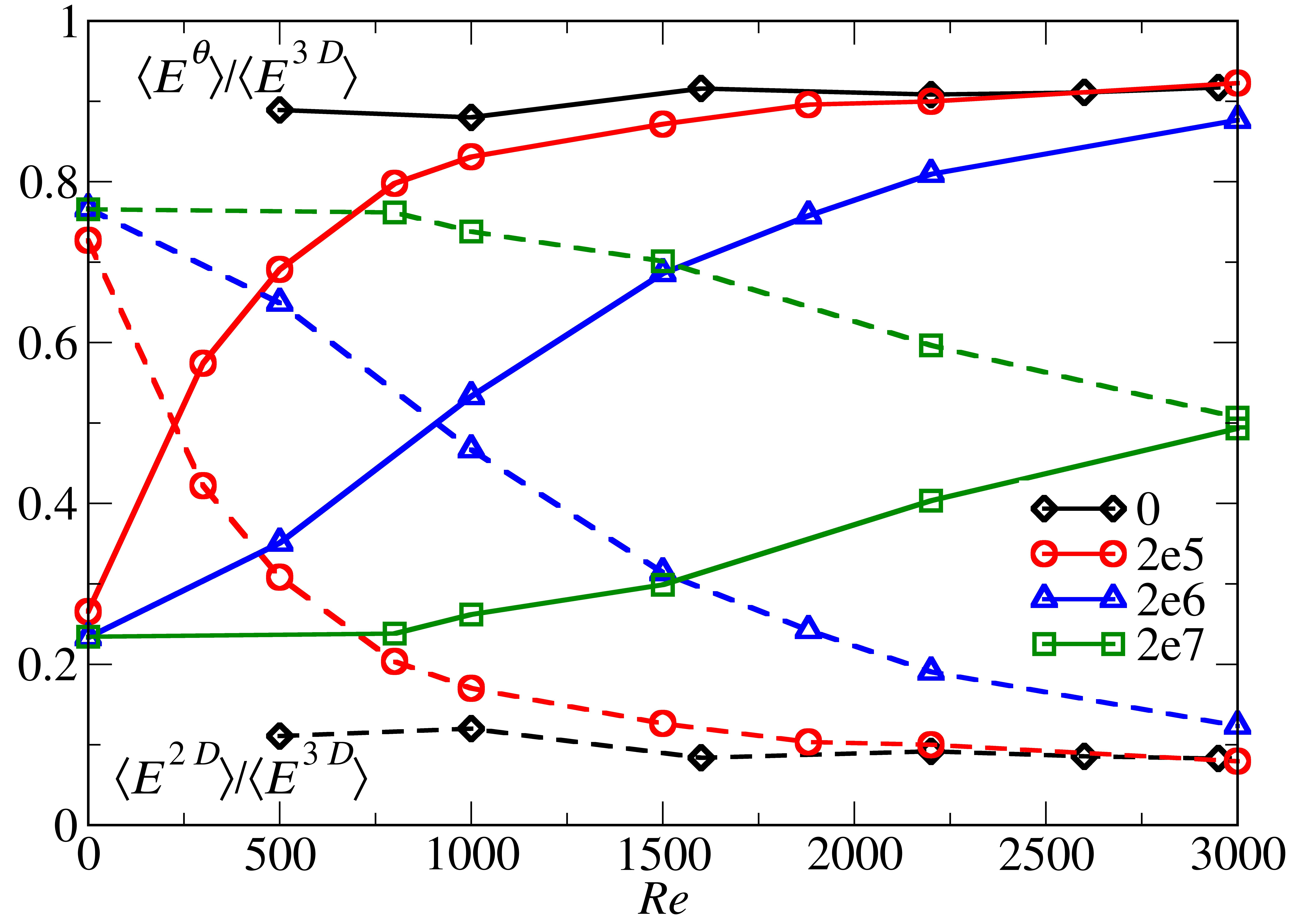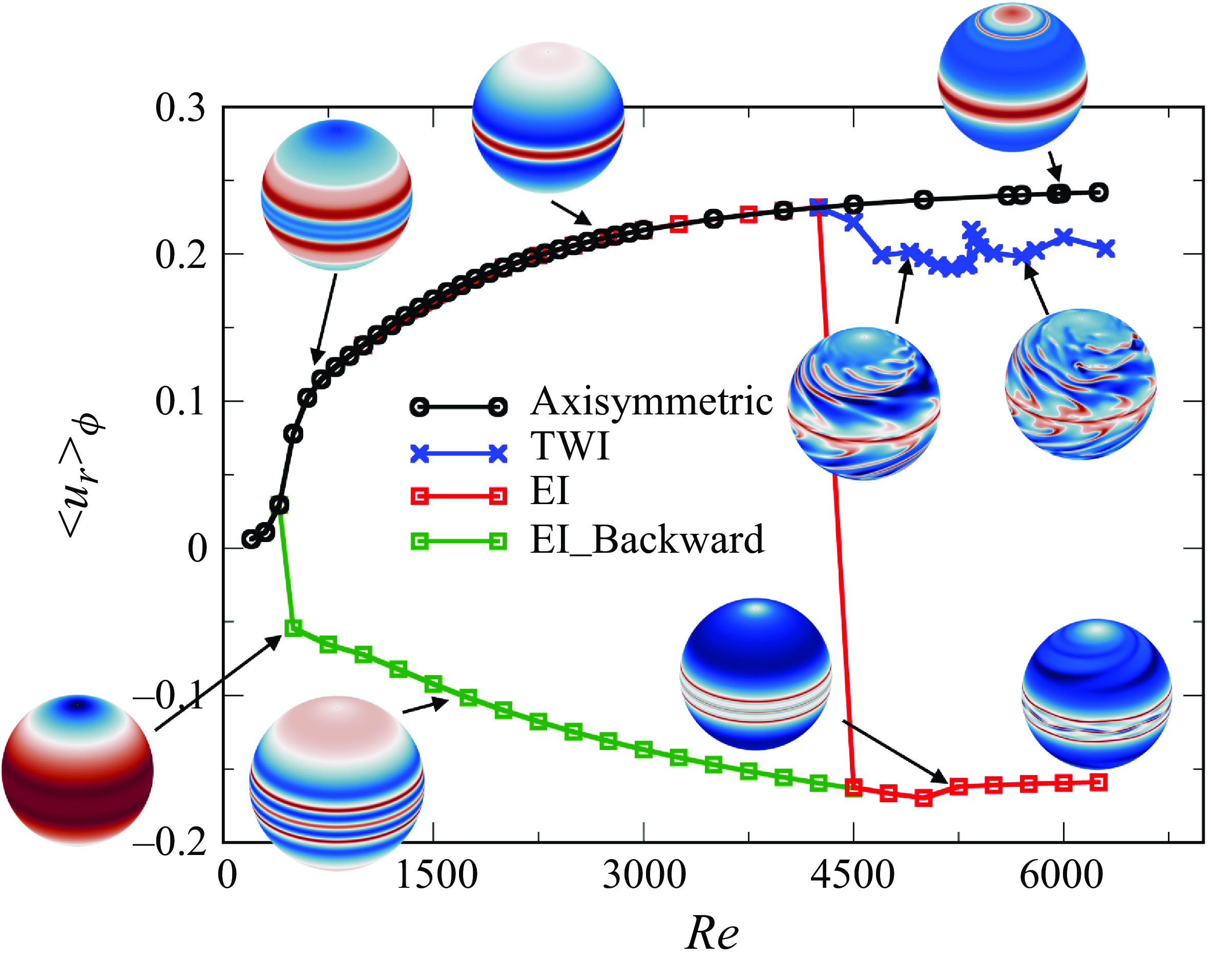Vorticity dominated flows
Vortex breakdown in concentrated vortices with axial velocity
Axial vortices are prevalent in engineering flows, such as flow past delta wings as well as in geophysical flows, such as super-cell thunderstorms. Axial vortices are prone to the phenomenon of ‘vortex breakdown,’ which affects these flows severely. For example, vortex breakdown in flow past delta wings results in loss of control over control surfaces. Analysis of vortex breakdown is fundamental to the understanding of the physics and thereby controlling and forecasting these flows.
A model often used to study vortex breakdown is the flow generated by a rotating lid inside a closed circular cylinder. This flow depends on two non-dimensional parameters: (i) aspect ratio, defined as \(\Gamma = H/R\), where \(H\) is the height of the cylinder, and \(R\) is the radius of the cylinder; and (ii) Reynolds number, defined as \(Re = \Omega R^{2}/\nu\), where \(\Omega\) is the speed at which the lid is rotating, and \(\nu\) is the kinematic viscosity of the fluid used. This configuration is known to exhibit the bubble-type vortex breakdown.
- Vortex breakdown in incompressible Vogel-Escudier flow
The left movie shows the axisymmetric vortex breakdown at a moderate Reynolds number of \(Re=2200\). The streamlines show two breakdown bubbles. Green-colored particles are inside the lower breakdown bubbles, while the red and cyan particles are outside the bubbles. The axisymmetric bubbles act as a barrier, meaning the fluid cannot cross the bubble boundary, as seen in the movie. The green particles never leave the bubble, while the red and cyan particles never enter the breakdown bubbles.
The right movie shows an unsteady, non-axisymmetric vortex breakdown at the Reynolds number of \(Re=3500\). The breakdown bubble is made visible by the iso-surface of zero axial velocity. The flow supports rotating azimuthal waves of wavenumber \(k=5\), which is shown by the contours of the axial velocity in an \(rz\) plane.
- Vortex breakdown in incompressible, stratified Vogel-Escudier flow

The energy content associated with the velocity fields in the \(r − z\) plane \((\langle E^{2D}\rangle)\) and out-of-the-plane \((\langle E^{\theta}\rangle)\) shows various regimes of the flow, namely: rotation dominated (RD) and convection dominated (CD) regimes. There is also a transitional regime where both energies are comparable. - Vortex breakdown in the presence of small compressibility
Details coming soon … - Vortex breakdown in rarefied conditions
Details coming soon … - Dynamics in Spherical Couette Flow

